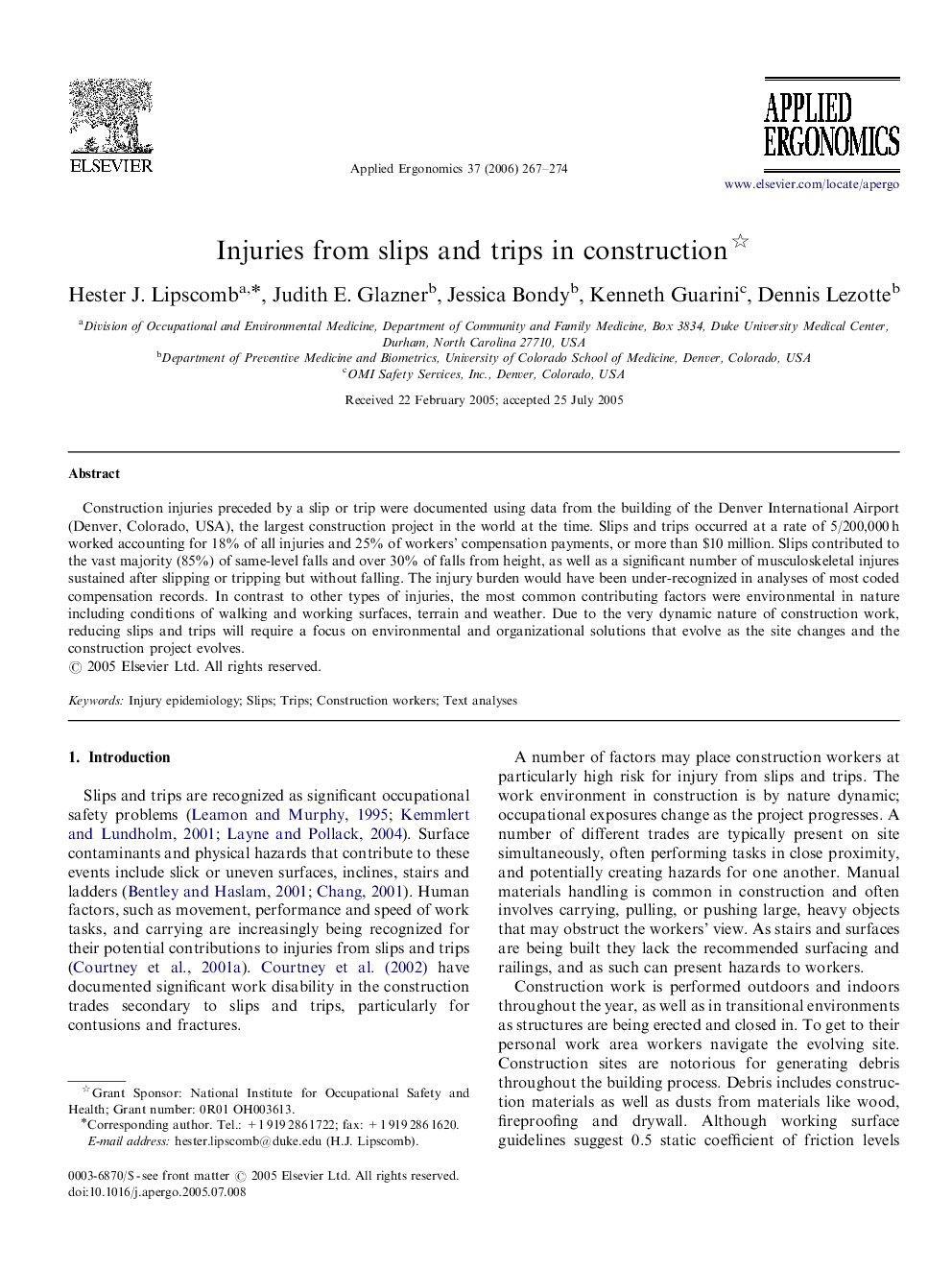| Article ID | Journal | Published Year | Pages | File Type |
|---|---|---|---|---|
| 551504 | Applied Ergonomics | 2006 | 8 Pages |
Construction injuries preceded by a slip or trip were documented using data from the building of the Denver International Airport (Denver, Colorado, USA), the largest construction project in the world at the time. Slips and trips occurred at a rate of 5/200,000 h worked accounting for 18% of all injuries and 25% of workers’ compensation payments, or more than $10 million. Slips contributed to the vast majority (85%) of same-level falls and over 30% of falls from height, as well as a significant number of musculoskeletal injures sustained after slipping or tripping but without falling. The injury burden would have been under-recognized in analyses of most coded compensation records. In contrast to other types of injuries, the most common contributing factors were environmental in nature including conditions of walking and working surfaces, terrain and weather. Due to the very dynamic nature of construction work, reducing slips and trips will require a focus on environmental and organizational solutions that evolve as the site changes and the construction project evolves.
